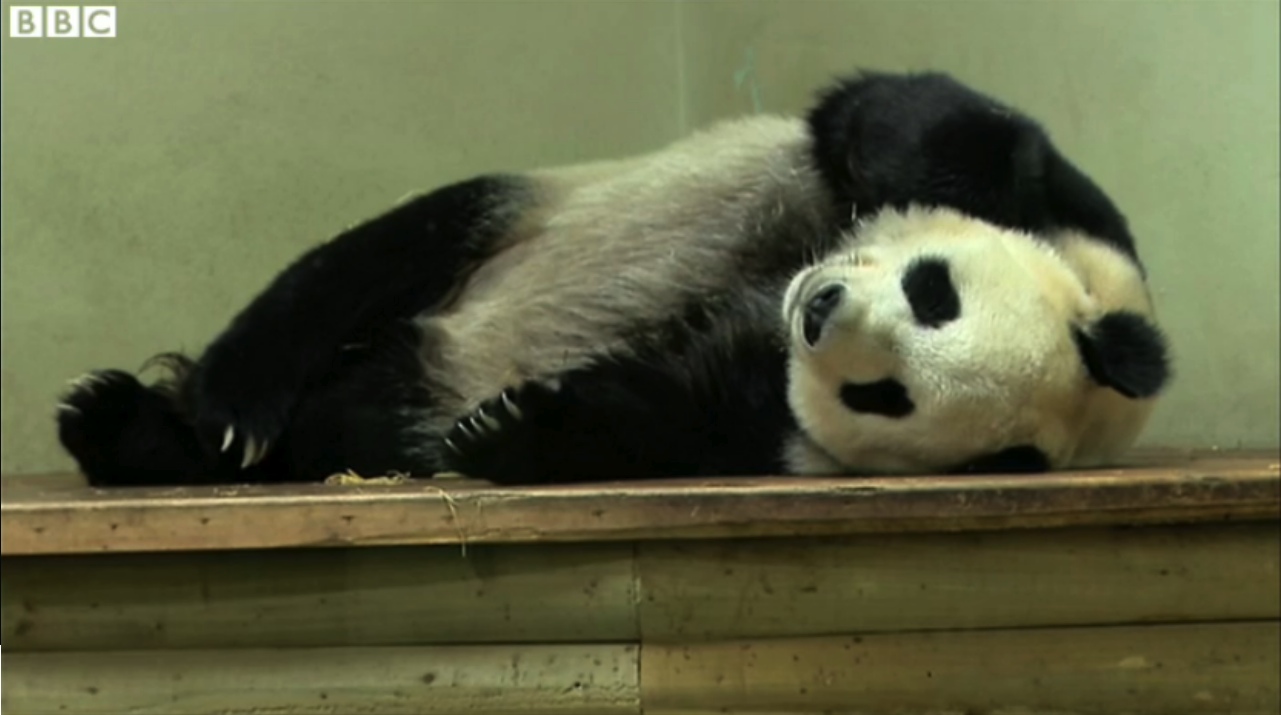Panda Miscarries at Edinburgh Zoo

The giant panda, Tian Tian, seems to have miscarried after weeks of showing signs of being in late-term pregnancy, Edinburgh Zoo officials said today (Oct. 15).
"We are all saddened by this turn of events after so many weeks of waiting," Chris West, CEO for the Royal Zoological Society of Scotland, said in a statement. "Timings are difficult to pinpoint at this moment, but we had a meeting this morning where Tian Tian's behavior and hormone results were reviewed, and have come to the conclusion that it is very likely she has lost the pregnancy."
Determining whether a panda is pregnant is tricky, as females often experience a pseudopregnancy in which they show all the signs of a real pregnancy, including a surge in hormone levels and behavior changes such as nest-building, lost appetite and longer snoozes. In addition, giant panda fetuses don't begin to develop until the last few weeks of gestation. [Baby Panda Pics: See A Cub Growing Up]
"Up until now, Tian Tian has consistently shown signs of pregnancy — she passed a mucus plug around mid-September and began producing colostrum. She also experienced a prolonged secondary-rise in progesterone," West said. "However, the veterinary team has noticed a significant decline in the amount of colostrum being produced, and over the last few days she has returned to the normal eating and behavioral patterns of a non-pregnant panda."
(Colostrum is a form of milk formed in the mammary glands of mammals typically just before giving birth.)
Zookeepers tried both natural and assisted reproductive methods to try to get Tian Tian pregnant during her 36-hour fertile window. However, love didn't seem to be in the air, as Tian Tian showed signs that she wouldn't be responsive to the male, Yang Guang, and putting the two together could pose a risk of injury to the bears. As such, a mixture of fresh semen from Yang Guang and frozen semen — from Yang Guang and a male giant panda named Bao Bao — was used to artificially inseminate Tian Tian in April.
Tian Tian came to Edinburgh with Yang Guang in December 2011 on a 10-year loan from China. All pandas in captivity belong to China, the only place where the animals are found in their natural habitat. Breeding programs like the one at Edinburgh Zoo are necessary, experts say, to bolster panda populations and genetic diversity of the species. More than 300 pandas live in captivity, and about 1,600 are left in the wild.
Get the world’s most fascinating discoveries delivered straight to your inbox.
"The panda enclosure will remain closed until the end of the week, in order to give Tian Tian time to get back into her routine and provide her keepers with the chance to recuperate after this long period of waiting," West said in the statement.
Follow Jeanna Bryner on Twitter and Google+. Follow us @livescience, Facebook & Google+. Original article on LiveScience.
Jeanna Bryner is managing editor of Scientific American. Previously she was editor in chief of Live Science and, prior to that, an editor at Scholastic's Science World magazine. Bryner has an English degree from Salisbury University, a master's degree in biogeochemistry and environmental sciences from the University of Maryland and a graduate science journalism degree from New York University. She has worked as a biologist in Florida, where she monitored wetlands and did field surveys for endangered species, including the gorgeous Florida Scrub Jay. She also received an ocean sciences journalism fellowship from the Woods Hole Oceanographic Institution. She is a firm believer that science is for everyone and that just about everything can be viewed through the lens of science.


